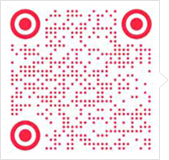
http://www.hteacher.net 2024-01-29 17:17 教师招聘网 [您的教师考试网]
一、教学目标
1. Students can understand the basic meaning of the simple future tense and learn to use the simple future tense correctly.
2. Students can tell the difference of the words: more, less, fewer to describe the quantity in the comparative degree.
3. Students can use the simple future tense to talk about the predictions in the future.
4. Students can use the comparative degree correctly.
5. Cultivate students’ positive attitude towards the changes in the future.
二、教学重难点
1. Students can use the simple future tense correctly to talk about the changes and things in the future.
2. Foster students’ positive attitude towards future life.
三、教学过程
Step 1. Lead-in
Show some pictures of future life in the movies, such as Pacific Rim, Artificial Intelligence, then lead students to talk about the future life.
T: What are these pictures on the screen about? What do you know about the future life?
【设计意图】通过一些科幻电影图片引导学生讨论未来生活,在语境中引出语言形式,引导学生使用一般将来时进行口头语言表达。
II. Presentation
1. Shows some sentences students used in the conversations with the multimedia.
The city will be smart in the future.
People will have enough time to enjoy life.
Robots will help to do the homework for students.
2. Lead students to observe and find out the common points of these sentences: the auxiliary word: will and the adverbial of time.
3. Lead students to understand the simple future tense and think about the following questions:
When shall we use the simple future tense?
What are the adverbials of time used?
What are the different structures of the simple future tense: the assertive sentence, the negative sentence and the general question?
T: You can first think about it then discuss it with your group members.
【设计意图】通过呈现对话中一般将来时的句子,引导学生观察和对比,总结出一般将来时的用法和特点。运用学生熟悉的例句可以降低学习难度。学生自主学习之后进行讲授,可以提高学生参与的积极性,培养学生解决问题的能力。
推荐阅读:
责任编辑:欣欣
公众号

视频号

小红书

小程序

APP

京ICP备16044424号-2京公网安备 11010802023064号 Copyright © 2001-2024 hteacher.net 北京中师华图文化发展有限公司 版权所有